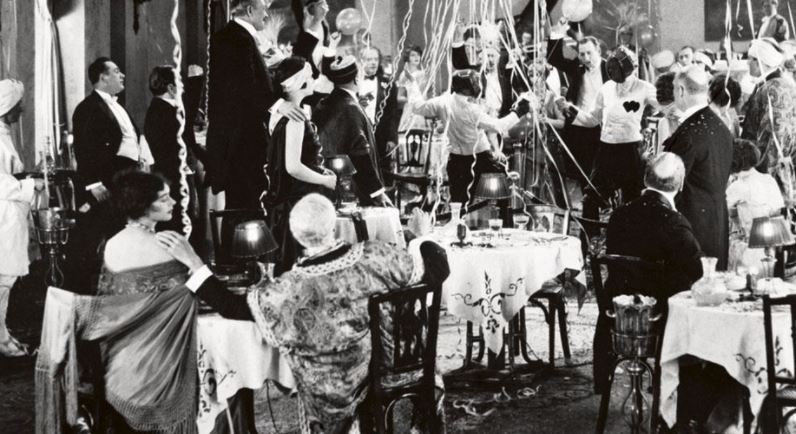New Roaring Twenties - wishful thinking?
As soon as we have shaken off the oppressive straitjacket of Covid-19, we go completely wild again. Travelling, partying, meeting each other and above all: buying, buying, buying. We are hungry and have a lot of catching up to do. This overtaking behaviour results in new Roaring Twenties. At least, that's what the trendsetters and watchers predict. Is the bomb really about to burst? And if so, what does consumer hunger mean for retail and in particular Ecommerce† Or is it a textbook example of noise and wishful thinking?
The possible rebirth of the Roaring Twenties seems to be coined by the French cosmetics brand L'Oréal. Under the yoke of the pandemic, the cosmetics sector was dealt heavy blows. As the vaccination programmes got underway, optimism returned. People are eager to go out again, said Jean-Paul Agon, CEO of L'Oréal, early this year. Beautiful clothes and make-up are part of that.
"It will be no different than in the Roaring Twenties, with a feast of colours and scents."said the cosmetics boss. The shares of L'Oréal shot up spontaneously. The big, worldwide celebration did not happen yet, because Covid-19 is more persistent than expected. As a result, we eagerly look forward to more festive times, in which we can let our money roll freely again.
Anyway, the thought of the Roaring Twenties of the last century is not so crazy. Then, too, a pandemic preceded the exuberant behaviour. That was the Spanish flu, which cost millions of lives shortly after the First World War (1914-1918). While Covid-19 is less devastating, the collective depression is no less. We keep our money in our pockets en masse, often forced by the many restrictions but also out of fear. In anticipation of better times.
How is the retail cake divided during the Roaring Twenties?
If soon everyone in the western world is vaccinated twice or even three times, an upturn in spending is obvious. How intense will it be? Will it mainly benefit physical shops or Ecommerce? Or will the pennies be divided fairly? And will the great revival also bring new opportunities and ideas? In other words, will innovative retail formulas emerge during the supposed new Roaring Twenties?
The renowned business magazine Forbes thinks so. Forbes expects hordes of hungry consumers to return to the shopping streets in search of tangible shopping experiences during the Retail Renaissance. Tried and tested models and strategies are not enough for retail to fully benefit from this, offline or online. It is time for a new start and a powerful, innovative approach, says Forbes. In short, old values can be thrown out.
Strong increase in D2C business
One of the key trends that Forbes believes will lead to a retail rebirth is a surge in direct-to-consumer (D2C) business. Brands that excel in this, such as Nike, saw and are seeing a sharp increase in their sales during the Covid-19 pandemic. Both online and through physical outlets. The sales channels are converging more and more. In this respect, the tangible shop floor turns out to be pre-eminently suitable for meticulously mapping out what customers really want and desire, for enriching the customer experience, and for improving margins.
However, this does not detract from the fact that 2020 was a record year for the closure of physical shops worldwide. Because shopping areas were closed during lockdowns to no-go areas were declared, many entrepreneurs were forced to give up. Thanks to adequate government support, the damage in the Netherlands remained limited. Despite corona, the vacancy rate even slightly decreasedwhich does not alter the fact that the big cities are still struggling. But whichever way you look at it, Ecommerce comes out of the health crisis as the big winner. In coronary year 2020, the Dutch consumer spent €26.6 billion at web shops, an increase of 7 percent compared to 2019. The number of online purchases increased by 27 percent. Consumers who were previously devoted to 'bricks' found their way to 'clicks'. What that means for the coming years remains guesswork.
Roaring Twenties, if only it were true...
There is no doubt that the customer experience in tangible shops remains essential in the entire omnichannel strategy. This was clearly visible between the severe lockdowns. To the despair of many a mayor, the shopping streets filled up immediately as soon as the cabinet let go of the corona reins a little. Offline and online complement each other very well, as is repeatedly demonstrated. Whether that will be enough to maintain the supply in shopping areas once the government support ends remains to be seen. For that reason alone, a new Roaring Twenties is welcome.
However, it could be that we in the Netherlands are too down-to-earth about this. After the Spanish flu and the First World War, the Netherlands did revive. But things were less frivolous in our cities than in, say, New York and Paris. For the 'common man', care and virtue remained the motto. And it could well be that history is repeating itself. Even with the end of the corona crisis in sight.
Catch-up consumption' seems wishful thinking
According to recent research by De Nederlandsche Bank (DNB), most Dutch people have no intention whatsoever of massively spending the money they have saved during the corona lockdowns. In the DNB Household SurveyIn a survey carried out by the research bureau Centerdata, only 14 percent of over two thousand respondents said they would be spending more. In short, the predicted 'catch-up consumption' does not seem to be that great. For the time being, the re-experiencing of the Roaring Twenties seems to be mainly wishful thinking.
All the more reason for Ecommerce entrepreneurs to keep their finger on the pulse. Because if the Dutch consumer is going to continue to sit on his savings, you will have to pull out all the stops in order to retain existing clients and attract new ones. Remember that consumers have become more critical and wiser online. Your customers demand transparency, optimal communication - through all channels - and the ultimate user experience. Personalisation is crucial, effective and Integral use of customer data is the success factor for the twenties, roaring or not.


